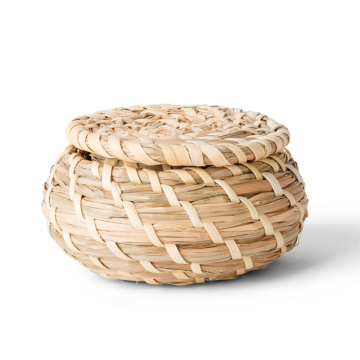The History of Daigaku Imo: Japan’s Sweet and Crispy Culinary Delight
Daigaku Imo (大学芋) is a traditional Japanese culinary treat made from deep-fried sweet potatoes, coated in a luscious, caramelized syrup, and finished with a sprinkling of nutty black sesame seeds. This beloved dish boasts a crispy, golden-brown exterior and a soft, fluffy interior, offering a delightful contrast in textures. With its origins tied to university students, Daigaku Imo has remained a cherished Japanese comfort food, celebrated for its rich flavors and nostalgic appeal.
Origins: A Sweet Treat for Students
Daigaku Imo traces its history back to the early 20th century, during the Taisho era (1912–1926). The dish became popular among university students in Tokyo, particularly those from Tokyo University and other prestigious schools.
There are several theories about how it got its name:
- Cheap and Filling for Students – Sweet potatoes were an affordable and nutritious staple, making them an ideal snack for university students with limited money. Vendors near universities would sell Daigaku Imo as a cheap and satisfying treat.
- Students Selling for Tuition – Another theory suggests that struggling university students made and sold Daigaku Imo to help pay for their tuition and living expenses. This led to the dish being associated with college life and student entrepreneurship.
- Popular in University Cafeterias – Some believe that the dish gained popularity in university cafeterias, where it was served as an inexpensive yet delicious dessert.
Regardless of its exact origin, Daigaku Imo quickly became a culinary icon in Japan, enjoyed not just by students but by people of all ages.
Evolution of Daigaku Imo in Japanese Cuisine
Over time, Daigaku Imo transitioned from a simple student snack to a widespread street food and home-cooked treat. It became especially popular in sweet potato-producing regions like Kagoshima and Ibaraki, where high-quality Japanese sweet potatoes (such as Anno Imo and Satsumaimo) are grown.
The recipe has remained largely the same, but different regions have added their own twists:
- Traditional Tokyo Style – Uses a crisp, deep-fried sweet potato coated in a syrup made from sugar, soy sauce, and honey, then sprinkled with black sesame seeds.
- Kagoshima Variation – Sometimes includes brown sugar (kokuto) for a deeper, molasses-like flavor.
- Modern Versions – Some versions add butter, cinnamon, or even matcha powder to enhance the flavor.
Today, Daigaku Imo is not only found in street stalls and home kitchens but is also sold in supermarkets, department store food halls, and specialty confectionery shops.'
Cultural Significance of Daigaku Imo
Daigaku Imo holds a special place in Japanese culinary culture, particularly as an autumn and winter delicacy. Since sweet potatoes are harvested in the fall, this dish is often enjoyed during the cooler months. It is also a nostalgic snack for many, bringing back memories of childhood and university life.
In modern Japan, Daigaku Imo is still popular as:
- A comfort food that pairs well with tea.
- A festival treat, especially at autumn fairs and school events.
- A seasonal specialty, featured in cafes and dessert menus.
How Daigaku Imo is Made
The preparation of Daigaku Imo is simple yet requires culinary precision to achieve the perfect balance of crispiness and sweetness.
Traditional Recipe Steps:
- Cut the sweet potatoes – Japanese sweet potatoes are sliced into irregular chunks or wedges (often with the skin left on).
- Deep-fry until golden brown – The pieces are fried until they develop a crispy outer layer while staying soft inside.
- Prepare the syrup – A glaze is made by heating sugar, honey, mirin, and soy sauce until thick and caramelized.
- Coat the sweet potatoes – The hot fried potatoes are tossed in the syrup, ensuring an even coating.
- Sprinkle with sesame seeds – Black sesame seeds add a nutty contrast to the sweet glaze.
The result is a crunchy, caramelized exterior with a fluffy, naturally sweet interior—a simple yet satisfying treat.
Daigaku Imo’s Modern Popularity
Daigaku Imo has remained a timeless favorite, and in recent years, it has experienced a revival in Japanese and global culinary trends.
- Convenience Store & Supermarket Versions – Pre-packaged Daigaku Imo is available in many stores, making it easy to enjoy anytime.
- Dessert Cafés & Fusion Cuisine – Some modern restaurants serve Daigaku Imo with ice cream, whipped cream, or even drizzled with chocolate.
- International Influence – As Japanese sweet potatoes gain popularity worldwide, Daigaku Imo has been embraced by food lovers outside Japan, especially in Taiwan, South Korea, and the United States.
Conclusion
Daigaku Imo is more than just a simple sweet potato dish—it is a culinary symbol of Japan’s food culture, student life, and seasonal traditions. What started as an affordable snack for university students has become a beloved comfort food enjoyed by all generations. With its perfect balance of crunchy, caramelized sweetness and soft, earthy richness, Daigaku Imo continues to be a nostalgic and heartwarming treat that stands the test of time.





